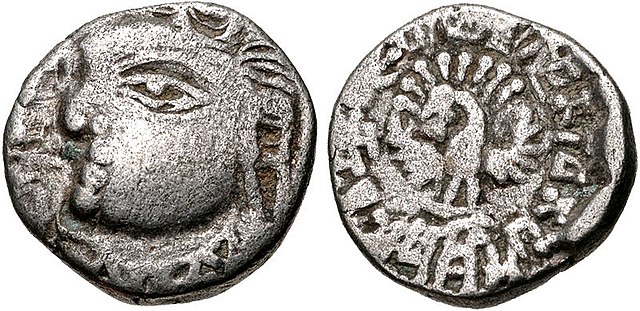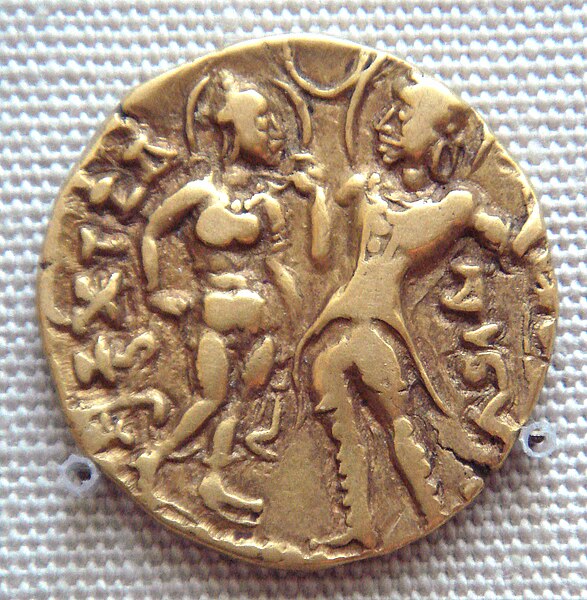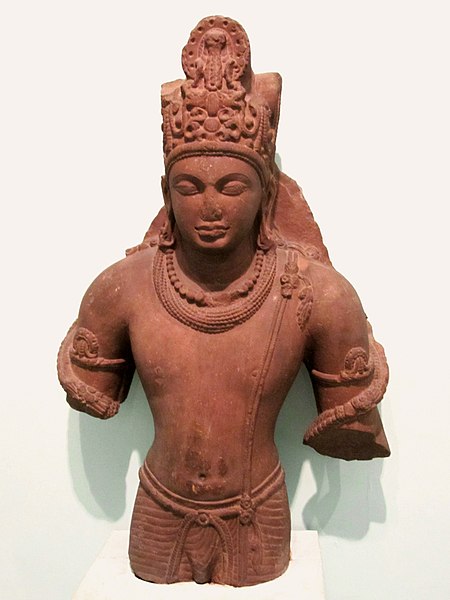The Maukhari dynasty was a post-Gupta dynasty who controlled the vast plains of Ganga-Yamuna for over six generations from their capital at Kanyakubja. Maukharis were Kshatriyas who belonged to the Chandravamsha or the Lunar race. They earlier served as vassals of the Guptas and later of Harsha's Vardhana dynasty. The Maukharis established their independence during the mid 6th century. The dynasty ruled over much of Uttar Pradesh and Magadha. Around 606 CE, a large area of their empire was reconquered by the Later Guptas. According to Hieun-Tsang, the territory may have been lost to King Shashanka of the Gauda Kingdom, who declared independence circa 600CE.
Maukhari dynasty
The Aphsad inscription of Ādityasena
Asirgarh seal inscription of Sharvavarman, Maukhari dynasty, 6th century .
Sasanian Empire King Khosrow I sits before the chessboard, while his vizir and the Indian envoy of Kannauj are playing chess. Shahnama, 10th century CE.
The Gupta Empire was an ancient Indian empire on the Indian subcontinent which existed from the early 4th century CE to early 6th century CE. At its zenith, from approximately 319 to 467 CE, it covered much of the Indian subcontinent. This period has been considered as the Golden Age of India by historians, although this characterisation has been disputed by some other historians. The ruling dynasty of the empire was founded by Gupta and the most notable rulers of the dynasty were Chandragupta I, Samudragupta, Chandragupta II, Kumaragupta I and Skandagupta. The 4th-century CE Sanskrit poet Kalidasa credits the Guptas with having conquered about twenty-one kingdoms, both in and outside India, including the kingdoms of Persians, the Hunas, the Kambojas, tribes located in the west and east Oxus valleys, the Kinnaras, Kiratas, and others.
Queen Kumaradevi and King Chandragupta I, depicted on a gold coin
Standing Buddha in red sandstone, Art of Mathura, Gupta period c. 5th century CE. Mathura Museum
Gold coins of Chandragupta II
Sculpture of Vishnu (red sandstone), 5th century CE.








